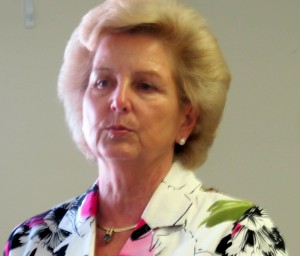How often do you hear about the glass ceiling, the wage gap, and the setbacks that women have dealt with and continue to confront? It is so frequent that it has unfortunately become commonplace. While these inequalities are surely worthy of acknowledgement, I would like to suggest that we spend some of our time, energy, and effort reading about how women have succeeded. About the stories of women who are leaders in Fortune’s top 500, about how the number of women with six-figure incomes is rising, about the 4 out of 10 women who outearn their partners or are sole breadwinners, and about the skills and personalities that got these women to the successful podiums where they stand now.
I want to break down a few of the most positive leadership attributes that can help us get there. The traits are identified in the recently released Athena Doctrine: How Women (and the Men Who Think Like Them) Will Rule the Future by John Gerzema and Michael D’Antonio.
Gerzema and D’Antonio travelled through 18 nations and asked 64,000 people about their outlooks on the role of leadership, where society is heading, and the desperate need to adopt feminine values since, according to the authors, “people around the world feel that feminine traits correlate more strongly with making the world a better place.” Specifically, 65 percent of people around the world believe that more female leadership in government would prompt a rise in trust and fairness and a decline in wars and scandals. Hence, women unknowingly possess the qualities, traits, and values to help society turn the world into a fair and better place. Who wouldn’t want that?
You may be wondering what it is exactly that we women possess that can be utilized as an asset to benefit ourselves, our neighbors, and the world at large?
According to the book, we, as women
- “Inspire more trust (in consumers, co-workers, and investors) because [we] seem to listen more carefully and empathize with others”
- Are more likely to cooperate, collaborate, communicate, and empathize, which are four of the idealized traits that are classified within the Athena Doctrine
- Embody the characteristics of morality, which is “strongly associated with loyalty, reason, empathy, and selflessness — all feminine traits”
Have you ever found yourself in a situation where you had to adapt, where you were flexible to cooperate, where you followed your maternal instincts and intuition, or where you openly shared your feelings?
D’Antonio and Gerzema argue that society “seeks a more expressive style of leader, one who shares feelings and emotions more openly and honestly.” So let go of the idea that Hillary Clinton crying on national television was a negative act and pride yourself in your instincts, emotions, and feelings.
I hope that you can look within yourself for the traits and strengths that you carry and can use for your own growth and for society at large. James Buchanan wrote that “the test of leadership is not to put greatness into humanity but to elicit it, for the greatness is already there.” So remind yourself that the greatness already lies within you, but the world needs leaders like us to bring out the greatness in others.
And keep in mind that these “feminine qualities” such as empathy, collaboration, and selflessness are innately possessed by both men and women. The difference is in the conscious decision to suppress versus leverage these traits. So remain optimistic and confident about the future, and embrace and deploy your feminine thinking style.

![Hillary-Clinton[1]](https://riverside-ca.aauw.net/files/2013/06/Hillary-Clinton1-150x150.jpg)

![election_results[1]](https://riverside-ca.aauw.net/files/2013/06/election_results1-150x150.gif)



